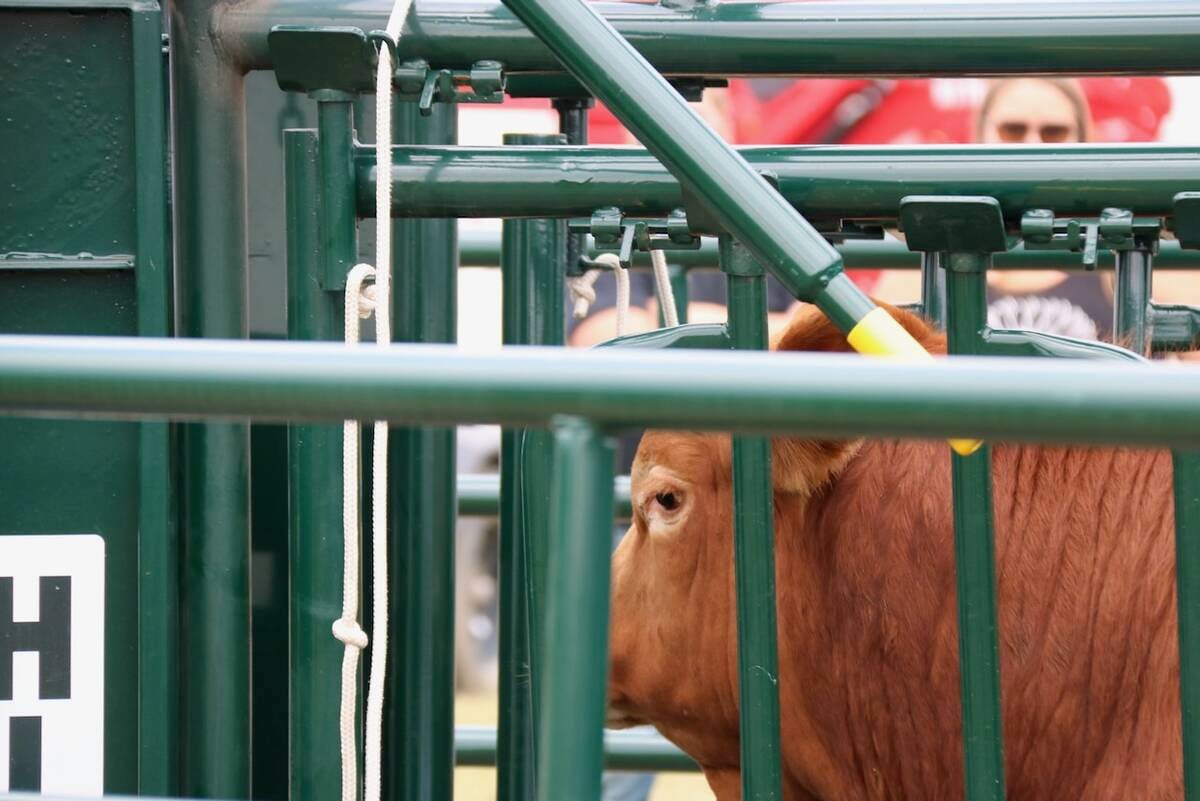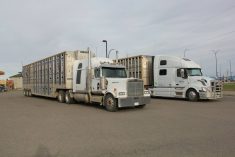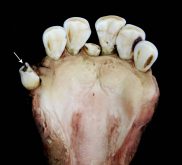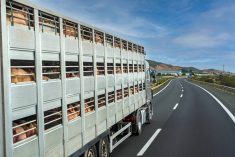Health risks seen after abrupt separation
SASKATOON — The most common method of weaning calf from cow is also the most stressful, recent research indicates.
That has implications for animal health and welfare, said Dr. Derek Haley, a veterinarian and assistant professor at the Ontario Veterinary College in Guelph, Ont.
Abrupt separation of calves from cows, with the two groups kept far apart, is the most common weaning method in North America.
However, Haley’s research found that other methods provoke less stress on cattle and reduce associated health risks, including fence line weaning and the more successful two-stage weaning.
Read Also

Good handling equipment a must on cattle operations
It’s important for the safety of producers and everyone else dealing with their stock that handling equipment is functional and safe.
“We have evidence that weaning represents a significant welfare issue for beef cattle,” Haley told the recent International Symposium on Beef Cattle Welfare.
“The most common method that we use to wean cattle actually intensifies the response and we have viable alternatives.”
He said he discovered two-stage weaning by accident when he attempted to determine whether calves were more distressed by not having milk or by not having their mothers.
He measured the amount of mooing and bawling and the amount of walking done by calves and by cows in different weaning scenarios.
In the first stage of two-stage weaning, calves are fitted with nose flaps that prevent sucking but allow them to eat grass and creep feed. The nose-clipped calves remain with cows for five to seven days.
In the second stage, calves are physically separated from the cows.
“The results of that were incredible, really,” Haley said.
“We found that two-stage calves called 97 percent less than controls and it had a similar effect on cows, with them calling 84 percent less than abruptly, remotely weaned animals.”
Calves weaned in two stages spent 30 percent more time eating compared to a control group that was weaned with abrupt and remote separation.
They also spent far less time walking: an average 46 kilometres for two-stage calves compared to 119 km for calves abruptly weaned and separated from their dams.
Haley also studied fence line weaning, in which calves are separated from cows by a fence so they can see and hear each other. He said his studies showed 50 percent less calling than with the traditional weaning method, as well as less walking.
Calves with fence line weaning had higher weight gains in the first 10 weeks after separation, he added.
“I think these last two methods … why do they work? Because they seem to more closely mimic the natural weaning process.”
Haley said a calf’s age is less critical than the method of weaning when it comes to stress.
Weaning is done to allow calves to be put on specialized feed at an earlier age, allow bred cows to recover body condition more quickly and in the case of dairy animals, allow human use of milk.
Left to their own devices, cows will undertake natural weaning when calves are seven to 14 months old. The process occurs over a two-week period while the cow rejects nursing attempts.
Haley said weaning is usually described as the most stressful event in a calf’s life, and producers can reduce that stress by using other methods.
In traditional weaning, stress is increased by related events. Calves are often shipped directly to auction yards or feedlots immediately after separation from their dams.
Then they are handled, tagged and sometimes vaccinated and castrated if necessary, adding to the stress load.
They are given a new diet in an unfamiliar environment with unfamiliar pen mates and they are more likely to get bovine respiratory disease, Haley said. However, initial separation from the cow appears to be the biggest factor.
“The focal social partner goes missing from the calf, and it does for the cow as well, and that is, as we understand it, the biggest driving factor that impacts weaning stress.”
If one believes that cattle are stoic and attempt not to show pain and stress for reasons of protection, “think how stressed they must be to walk around mooing for three or four days,” said Haley.
















